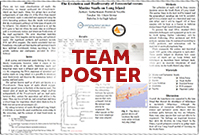Project:
Effects of Proximity to Roads on the Biodiversity of Nitrogen-Tolerant Lichen Species
- Students:
- Christina Grasso, Lyra-Anne Ku, Sofia Maragos
- School:
- Friends Academy, Nassau
- Mentors:
- Jennifer Newitt
Abstract:
Car emissions release nitrogen dioxide, and car emissions can damage certain types of lichen because lichen absorbs nutrients from the air. Regardless, in areas with a lot of nitrogen dioxide, one may find species of lichen that are more resistant to nitrogen dioxide. If we sample lichens on various trees from areas closer to a busy road, we anticipate that we will locate more nitrogen-tolerant lichen species than we would in more remote areas. We will carefully collect ten samples of lichens from two different locations with different proximity to a busy road and find which site has more nitrogen-tolerant lichen species. We will use PCR and gel electrophoresis to extract the DNA from the lichens and amplify a piece of the ITS gene (which is found in the mitochondrial genome). Then we can identify distinct species of lichen and determine where nitrogen-tolerant species (as listed on the US Forest Service website) are more prevalent.



